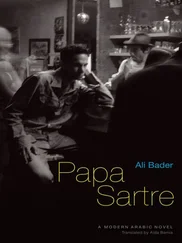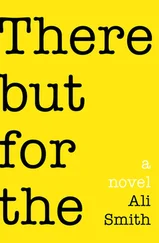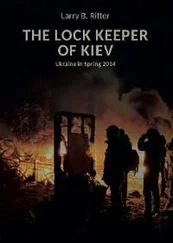In the morning, having surrendered himself to sleep on the bench, hugging his suitcase, umbrella and hat, he felt a hand patting him on the shoulder. The Iranian officer handed him his passport and allowed him to leave the airport for Tehran. Overwhelmed with unspeakable joy, he felt that he’d been born anew. He had a new personality that had erased the old one and its history. He went straight to a third-rate hotel where he decided to stay for some time until he found the address of the Iraqi merchant, Ismail al-Tabtabaei, the one who traded between Iraq and Iran.
The Tehran of those days left a powerful and lasting impression on his imagination. It charmed him with its undulating hills, its solemn, silent forests, its light-filled, rounded peaks and the statue of the poet Al-Firdawsi, who affirmed the potential integration of heaven and earth. During the reign of the Shah, Tehran was a modern city, with impressive avenues and hotels, luxurious palaces and dense forests. Its grey buildings, constructed in the nineteenth century, showed the influence of English architecture on Nasser al-Din Shah, who began to copy Western architectural techniques and designs. This was Haidar’s first vision of this fascinating, oriental city. In his room, which was made of teak wood and lay on the upper floor of the hotel, he wrote a long letter to his wife, Farida. The hotel was a beautiful old building surrounded and shaded by poplar trees. One wintry afternoon he went down to the hotel lounge and found the owner squatting on her knees, dusting the furniture with a feather duster and arranging the books elegantly on the wooden shelf. A book with a grey cover suddenly fell off the shelf onto the ground. Haidar picked it up, rearranged his scarf and began browsing through it. It was the Rubaiyat of the Persian poet Omar al-Khayyam, translated into five languages, including into Arabic by Ahmed al-Safi al-Najafi. Haidar had previously become acquainted with this poet at the Brazilian coffee shop in Baghdad. So he asked the owner to permit him to borrow the book to read it at leisure in his room. He read the book throughout the night as if to protect his silence and solitude from the falling snow. At dawn, before falling asleep, he wrote a long letter to Farida in which he described Tehran’s bazaars and outstanding museums, including the National Museum of Iran, the National Jewellery Museum and the Gulistan Palace. This fortress, built in the Safavid era, had been turned into a late-nineteenth-century Western-style palace by Nasser al-Din Shah, one of the important rulers of the Qajar era. The letter, which included some verses of al-Khayyam, was the very first to carry the signature: Haidar Salman, Hotel Sarjashma, Tehran, 1953.
This means that from his early days in Tehran, Haidar Salman began to discover this huge imperial city, visiting not only the deprived, congested areas to the south, but also the northern aristocratic neighbourhoods. Each morning, he went hurriedly out of Hotel Sarjashma. With his hands in his coat pockets, his hat on his head and his scarf over his face, he began to explore Tehran’s wide streets. He was captivated by the high, snow-capped Elburz Mountains, the long rows of huge, ancient trees and the winding side alleys that seemed to overflow with the secrets of craftsmen and small traders. He sometimes took his violin and sat in a large city square. On sunny winter days the fountain in the middle of the square seemed to whisper as though it were chirping. So he would play a piece or two on his violin and in the evening would return to the hotel, his ears filled with the sounds of lovers’ whispers mixed with the water that trickled down the mountains and flowed in streams through the streets of the city.
It is certain that Haidar Salman called more than once at Ismail al-Tabtabaei’s address. But he didn’t find him, because the latter was in Baghdad on account of his daughter’s illness. After a few days, when Haidar’s funds began to run out, he contacted Kakeh Hameh in Moscow. He told Hameh that Ismail al-Tabtabaei was not in Tehran and that he was running out of cash. Hameh sent him some money to tide him over until the left-leaning Iraqi merchant returned from Baghdad. During that period, Haidar Salman started to frequent the Khanzad restaurant, which lay at the crossroads of Fakhrabad and Qizard Streets, a few steps away from the main square in Tehran. This was because an Iraqi, Hekmat Aziz, worked at the restaurant. So Haidar Salman often went in the evening and sat by the back door of the restaurant, waiting for Hekmat Aziz to appear with a kebab sandwich wrapped in newspaper, which he would devour at a park nearby.
On the basis of the information that I have, I don’t actually know how Haidar Salman came to know his new friend Hekmat Aziz. Farida sent me a letter in which she thought that Kakeh Hameh was the one who introduced them. But when I questioned Kakeh Hameh about this and told him of Farida’s view, he denied the suggestion, telling me that he only became acquainted with Hekmat Aziz after the 1958 Revolution, when he saw him in Baghdad. Haidar Salman, however, wrote in one of his letters to Farida from Tehran that Hekmat Aziz had gone to Tehran to study architecture at the university. He had then found a menial job in the kitchen of the Khanzad restaurant. This was when he’d started to cooperate with the Tudeh Party and other revolutionary and leftist forces that opposed the Shah’s regime. During the fifties, Iraqis lived the fever of revolution. Revolutionary parties swarmed with young men and women who dreamed of change and hoped to repeat the revolution of Lenin and his bearded men in their own country.
Haidar and Hekmat’s friendship might have been strengthened by such café conspiracies, where they met with young Iraqis of the type that the right-wing newspapers nicknamed ‘kids of the left’ or ‘revolutionary adolescents’. At Naderi café on Pahlavi Street, they met various groups: Iraqi students studying at Tehran University, some junior clerics from Qom who were influenced by Marxism and later became members of Ali Shariati’s movement, and some migrant Iraqi workers in Iran. When Hekmat Aziz learned of Haidar Salman’s financial difficulties, he offered him the surplus food that the restaurant would otherwise have thrown out.
According to Haidar Salman’s account, Hekmat Aziz was a handsome, pitifully thin young man of twenty. He lived in an old, dilapidated apartment surrounded by rubbish in the Tobkhana district of south Tehran, an area of craftsmen, carpenters, shoemakers, tailors and poor Jews. Hekmat Aziz was preparing diligently for the revolution, the great coup d’état that would establish the republic of joy in Baghdad. This idea so dominated the hearts and minds of young people in those days that they travelled far and wide in order to bring it about. But what exactly drummed this fiendish notion into Haidar Salman’s head, an idea that was out of keeping with his first character? Was it the impact of the second character, one that was based on rebellion and dissent, the character of Ricardo Reis, which was assumed by the character of Haidar Salman? Was it the image of the protestor embodied in Shia Islam? Or was it something else?
Hekmat Aziz actually offered Haidar Salman what might have been the ideal way to enter Iraq once again, for no method was safer or more certain than the conspiratorial activities of the left. The method might have been a little fanciful and rather farfetched, and it required some patience, but there it was all the same. Revolutionary leftists were being smuggled in and out of Iraq, either through Iraqi Kurdistan in the north or via the marshes in the south. The Jewish musician was never in fact as rash or reckless as Hekmat Aziz, who’d broken with the Communist Party and arrived in Tehran two years earlier. He’d received training in guerrilla warfare while Haidar Salman was a petty-bourgeois with no prior clandestine adventures. All he wanted was to return to Iraq, and for him returning to Iraq meant no more than going back to the place where he used to play music in front of the families of Baghdad.
Читать дальше












